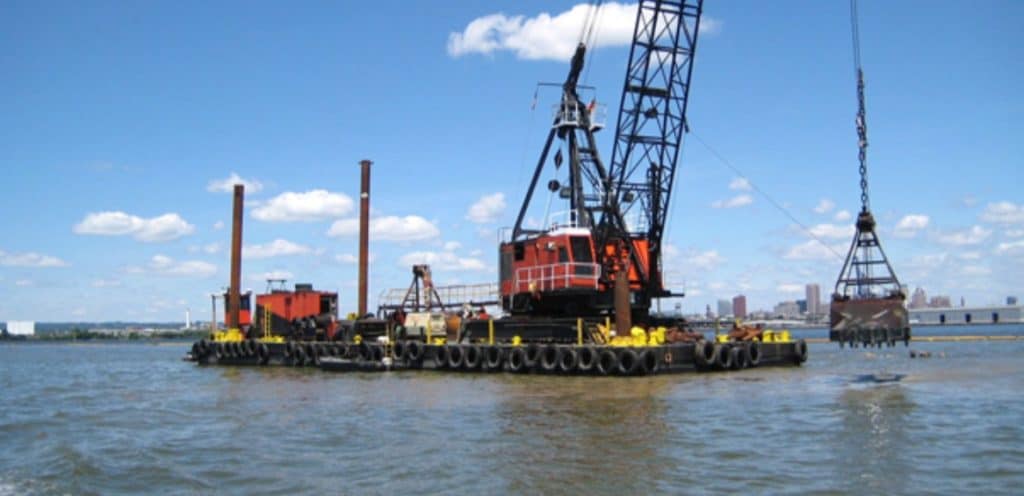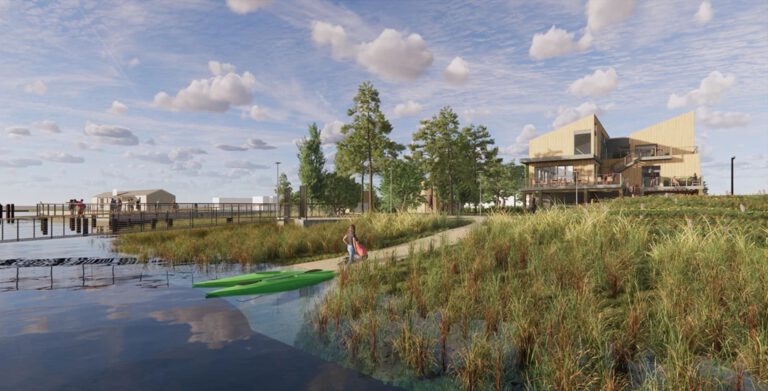The Port of Baltimore has already repurposed tons of dredged materials from its shipping channels to restore Poplar and Hart-Miller islands in the Chesapeake Bay.
Now, two companies will study the possibility of reusing dredged sediment to create concrete road barriers. Governor Larry Hogan and Maryland’s Board of Public Works approved the contracts Wednesday. Three other contracts have already been approved to test the use of dredged materials to make bricks and pavers, shoreline protection barriers, and even soil for growing sod.
“These innovative uses could turn sediment that builds up in the Chesapeake Bay into a valuable resource for making bricks, concrete and even structural support for shorelines,” says Gov. Hogan.
The shipping channels that lead to the Port of Baltimore must be routinely dredged to keep lanes open for the deep-water ships that call on Baltimore, so there is no shortage of mud, sand and sediment from the bottom. The port says an average of 4.7 million cubic yards of material must be dredged every year, from the 150 nautical miles of channels in the Bay, Patapsco River, and Baltimore Harbor.
The Hart-Miller (Baltimore County) and Poplar (Talbot County) island restoration projects have made good use of the dredged material, and James and Barren islands in Dorchester County are next to be rebuilt. But the new sediment-recycling study contracts could allow for more innovative use of dredged materials.
New productive solutions for dredged materials will allow the port to continue dredging without fear of where to put the surplus muck.
“This allows us to continue removing dredged sediment from our channels to maintain the 50-foot depth needed to accommodate the supersized vessels that bring cargo and jobs to the Port of Baltimore while recycling that sediment to use again in other ways—a real win-win,” says Maryland Port Administration Director William P. Doyle.
In each of the newest studies, contractors will use sediment from the port administration’s Cox Creek Dredged Material Containment Facility outside Baltimore. Harford Industrial Minerals Inc. will study use of dredged sediment in structural concrete and fill. And Susquehanna Concrete Products Inc. will study use of the sediment for general-use concrete products like retainer walls and blocks.
As these dredged materials studies move forward, the port is also moving forward with dredging a second 50-foot-deep berth, which will allow two supersized ships to call on Baltimore simultaneously.
-Meg Walburn Viviano




